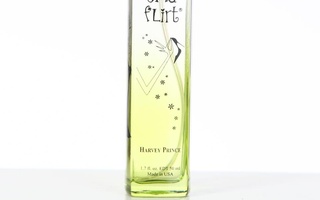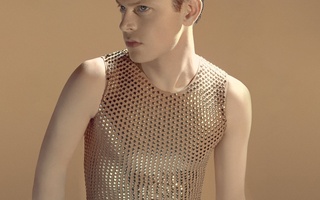{shortcode-21fc877be37b647b8ca681bac5597aedbd8a6905}Donning festival-mandated clear backpacks and sunglasses of every assortment, Outside Lands festival-goers danced and sang along as some of the biggest names in music graced the Golden Gate Park’s makeshift stadiums. Here are the first sound bites of the weekend.
Shannon and the Clams
Shannon and the Clams are in their element, and rightly so. The garage-punk band’s hometown is Oakland, California, something they shared to the elated cheers of their Bay Area fans on Friday. “The sun has come out,” guitarist Cody Blanchard said, enjoying the brief moment of warmth in the ever-foggy city. Still, it wasn’t much of a guard against the 64 degree temperature, as bassist and lead singer Shannon Shaw noted. “It’s freezing cold and I can’t feel my fingers,” she said later in the concert, but that didn’t stop her or the rest of the band from blessing the crowd with their own (albeit, metaphorical) spot of sunshine. Shannon and the Clams draws their musical influences from classic R&B, 50s doo-wop, 60s surf, and psychedelia, making for a stunning, bright combination that felt like a welcome escape from San Francisco’s moody skies. It was like being transported to a vaguely-defined, definitely-nonexistent, perpetually sunny era when even the infectious songs know how to smile.
That doesn’t mean that Shannon and the Clams is a happy-go-lucky, chirpy, candy-sweet band. If anything, their performance at Outside Lands highlighted their minimalist side. Aside from the small talk about the weather, there wasn’t much conversation with the crowd, nor transitions between songs. Each band member had their stayed behind their respective microphones. (Though, it was still a joy to see Will Sprott, with his tamborine-keyboard combination, rocking out in his own world on his side of the stage, stationary yet electric.) The audience, perhaps mirroring the band’s sedentary state, was dancing in some sort of side-step-sway motion, aside from a group of jubilant teens who were forming a mini mosh pit of their own, gleefully crashing into each other like a game of human pinball.
Shannon and the Clams’ performative strength is more musical than movement-based—they excited the crowd mostly through their songs, putting on a relatively no-fuss show otherwise. When the band hit their set’s stride with “Ozma,” about two-thirds of the way into the show, the side-step-swayers side-step-swayed a little more excitedly, and the mini mosh pit gained a few more participants. Shaw and Blanchard churned out lively riffs and solos while the lights above the stage flashed yellow and blue frantically, trying to keep up with their impressive pace. During “My Man,” audience members bounced to the beat of “I...I...I” and “you...you...you,” clinging onto every new syllable with clear anticipation.
The Mountain Goats
The Mountain Goats might have picked the perfect song to kick off their set. “Everybody here is beautiful,” they sang from “California Jam.” “That’s just how I feel / And it’s real.” Singer and guitarist John Darnielle ended the song with a little, quick jump—a small move that would quickly become his trademark during the show: two feet in the air for a split second, barely hovering above the ground, a mixture of happiness and surprise manifesting in a wide smile.
Darnielle’s stage character might have been one of the most wonderful parts of the set—not because the Mountain Goats played badly (because they were stellar), but because all of the sheer enthusiasm was infectious, difficult to distract yourself from (aside from the strange sprinkle of water that dripped from the stage’s roof, soaking one unlucky person’s black fedora). At one point, Darnielle put down the guitar and started skipping, sometimes sticking out his arms as if he was pretending to be an airplane.
Wry humor is also part of the appeal of The Mountain Goats, something especially evident on Friday as their playful irony bled from their songs and into their act. “Hope everyone’s having a good time,” Darnielle said. “Here’s a song about death.” Then later: “This is a song about one of history’s most notorious sellouts,” Darnielle said before launching into “Cry For Judas.” One of the most animated moments of the show was when everyone was belting out the lyrics to “This Year.” “I am going to make it through this year / If it kills me,” Darnielle and the crowd sang, culminating into a bizarre moment of euphoria—pure joy over a shared existential crisis.
Perfume Genius
Sometimes Perfume Genius danced like nobody was watching: His back faced the crowd, and he crouched, further obscuring his body from view. He mouthed lyrics to himself before one song’s beginning, seemingly unaware of the people in front of him.
Other times, Perfume Genius danced because he knew that somebody—a massive, swaying crowd—was watching. “It looks like he’s doing animal impersonations,” someone said, delighted. Perfume Genius’s moves were sultry, slow, and smooth. He was bending backwards, rolling his body, and pulling the mic cord with him like it was his dance partner. Perfume Genius started his set like this, with dramatic, deliberate languidness, before ending the dance with a simple “Hi.”
“My dog is here. My first show [at Outside Lands] and my dog is attending,” he later shared, before moving into the rest of his set. Perfume Genius commanded the crowd, moving around the stage like he owned it. And he technically did, for an ethereal fifty minutes. It was clear that we were lucky visitors in his world as he let us slip in and out of it, sometimes lost in his own music and sometimes playing along with our antics. (“You’re a queen!” someone shouted. Perfume Genius raised his hand to his ear playfully. “What’d you say?”)
So much of Perfume Genius’s magic is enhanced by the brilliant physicality he imbues into his dancing. But so much of it is also rooted in his voice. “Just like love,” Perfume Genius sang, sounding startlingly clear, airy, glasslike. “Slick, sheen, so bright.” Later, when Perfume Genius sang “Slip Away,” he spun around in a circle, stretching his arms wide for the song brilliant, shimmering feeling of catharsis: “Don't hold back, I want to break free / God is singing through your body / And I'm carried by the sound.”
Carly Rae Jepsen
After fulfilling her Internet-commanded destiny at Chicago’s Lollapalooza last weekend, Carly Rae Jepsen took to the stage at Outside Lands, leaving the inflatable sword, but bringing her bright brand of bubblegum pop with her. She invited her fans along for the journey, playing “Run Away With Me” first with the music video and the song title scrawled in neon text projected behind her. Though because of the stage’s arrangement, her band blocked part of the video, and for those my height and shorter, the screen read “RUN AWAY” instead before switching to a photo of pink flowers after the song’s conclusion.
“Let’s keep spreading the love!” Jepsen yelled to the crowd, tossing her hands in the air, which she did many, many times. Part of Jepsen’s choreography involved a lot of pointing at the sky and pointing at the crowd, which worked as an efficient way to interact with the audience, as sometimes the crowd excitedly pointed back. Jepsen was technically flawless, dancing across the stage with well-trained prowess. It was clear that Jepsen has all the makings of a pop-star, particularly because she embodies somewhat universal, non-specific sentiments. “I started to annoy my friends by talking about all my boy problems,” she said. “Me too! Me too!” someone shouted. Jepsen beckoned her audience to join as she sang “Boy problems, who's got 'em? / I've got 'em too,” waving her arm to the crowd, who waved back in collective motions. “I Really Like You” came next, set to screen projections of bespeckled thumping hearts. It looked like a cross between an “edgy” 2000s screensaver and Roy Lichtenstein pop art.
The crowd was in a frenzy for the song, but they were even more ecstatic when Jepsen played the 2012 hit that catapulted her to fame: “Call Me Maybe.” Hundreds of phones flew into the air, presumably to take videos of this extremely-anticipated moment. But they doubled as a surreal, crowdsourced, prop-based setting. After “Call Me Maybe” ended, hordes of people left. It was a shame, because the next song, “All That,” was one of the highlights of Jepsen’s performance, a more toned-down, but still enrapturing dimension of her persona. If she noticed, she didn’t show it, focusing intently on the song instead.
—Staff writer Grace Z. Li can be reached at grace.li@thecrimson.com. Follow her on Twitter @gracezhali.
Recommended Articles
-
Signature AuctionA plush toy rabbit, drams of perfume, clothing, and a few out-of-term textbooks will go on the block today at
-
 Recent Alumnus Formulates Perfume To 'Flirt for You'
Recent Alumnus Formulates Perfume To 'Flirt for You' -
 On 'Too Bright,' Perfume Genius Refuses to Flinch
On 'Too Bright,' Perfume Genius Refuses to Flinch -
From Boston Calling 2018: How Perfume Genius 'Utilizes the Space'Perfume Genius’s greatest asset is his voice. Whether it be in quiet musings or booming vocal riffs, his voice reaches out from the stage, between each person in the audience, to fill the space before it.
-
From Panorama Music Festival 2018: Shannon and the Clams InterviewShannon and the Clams is a rising name in alternative and punk coming out of Oakland, CA.













